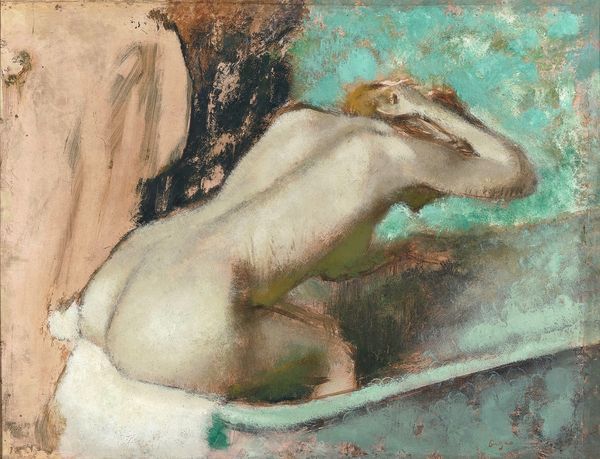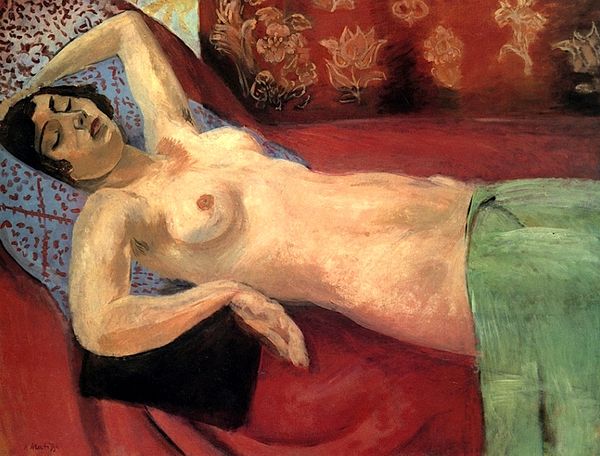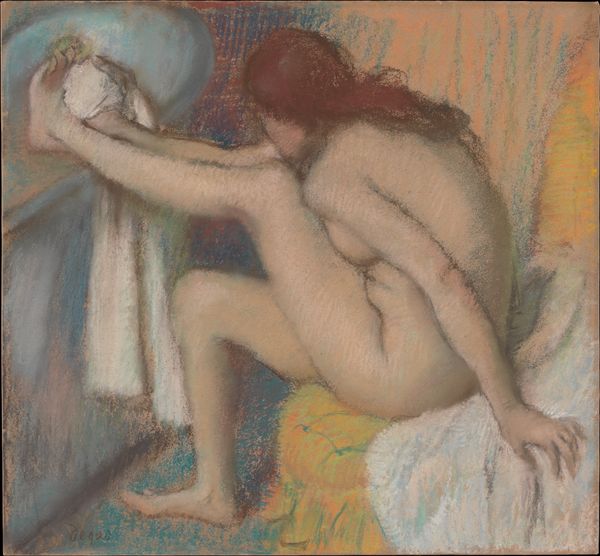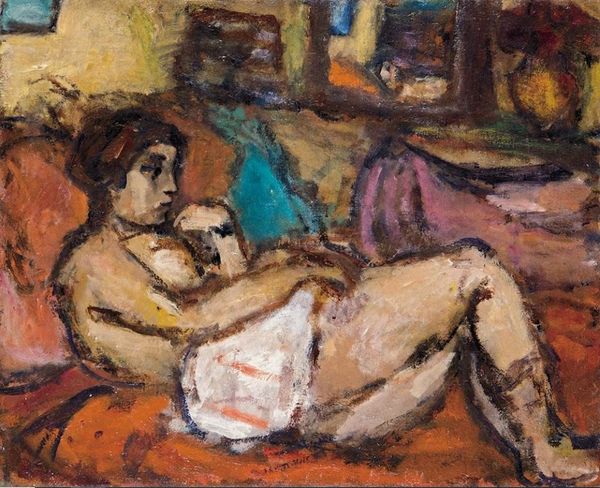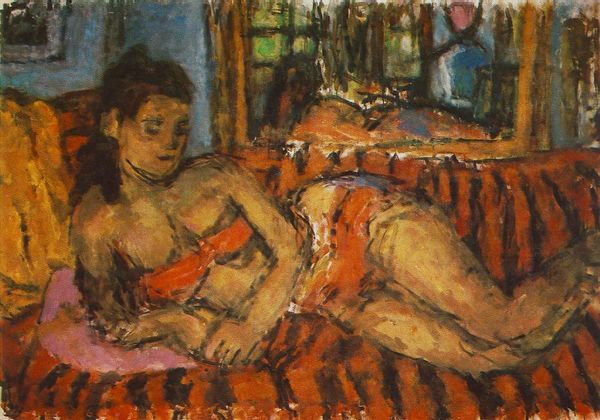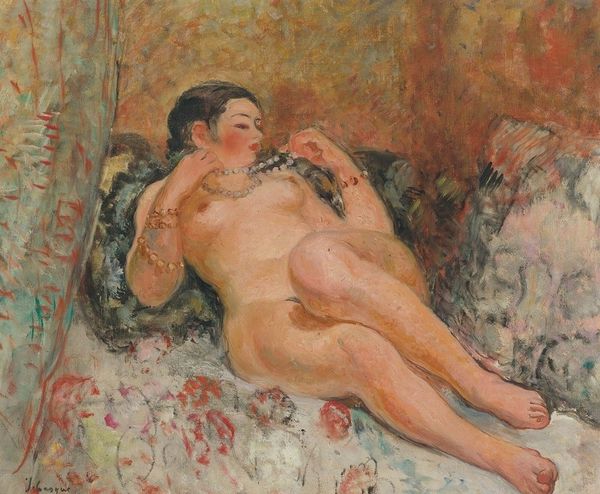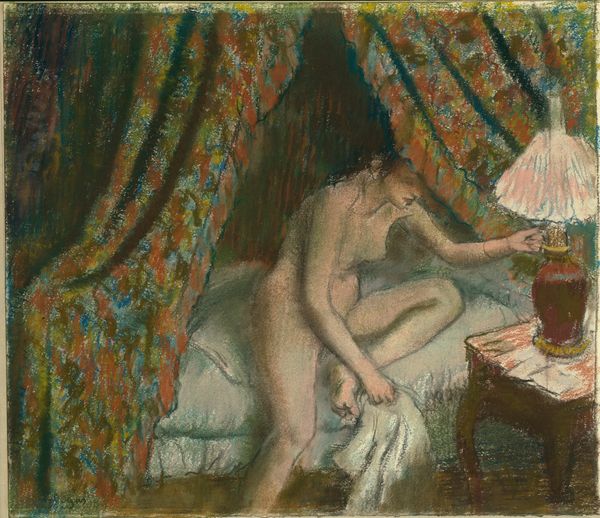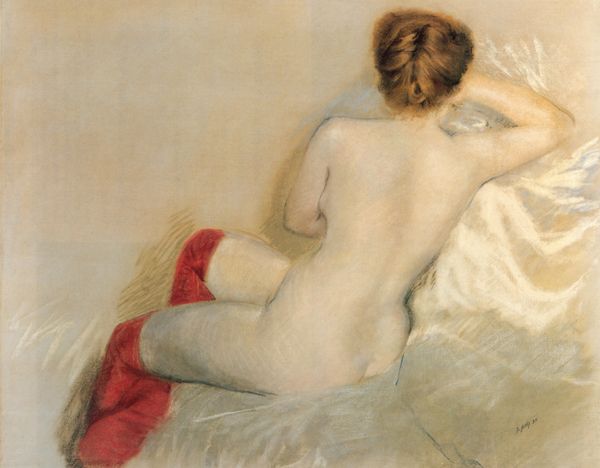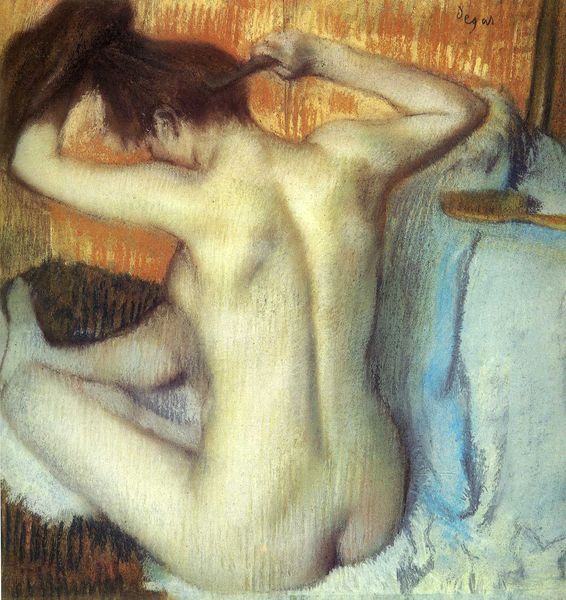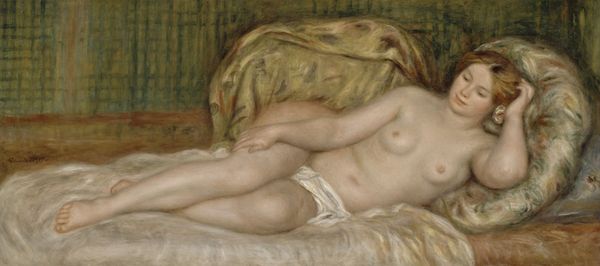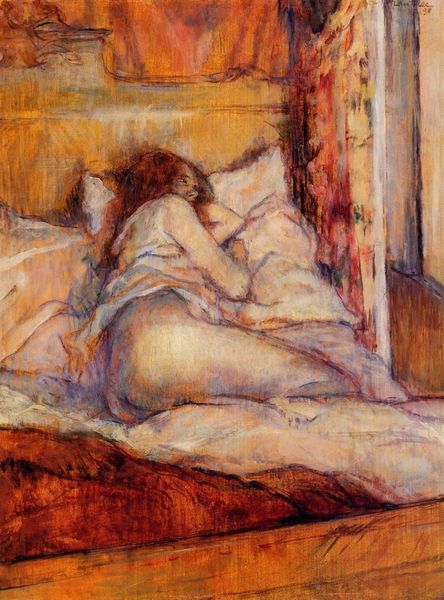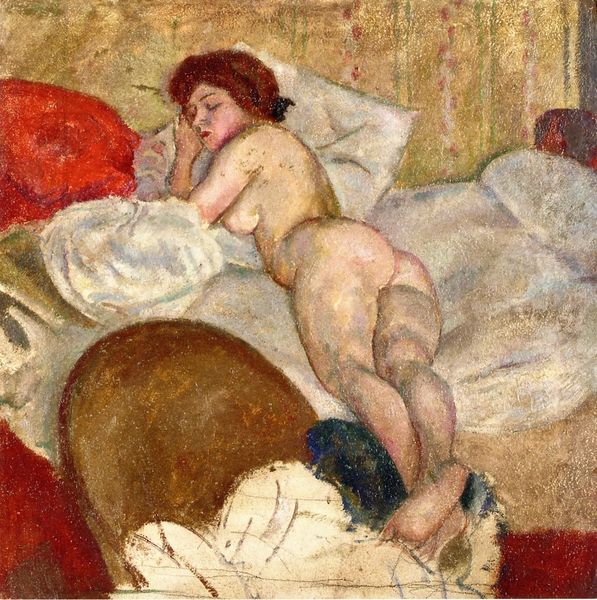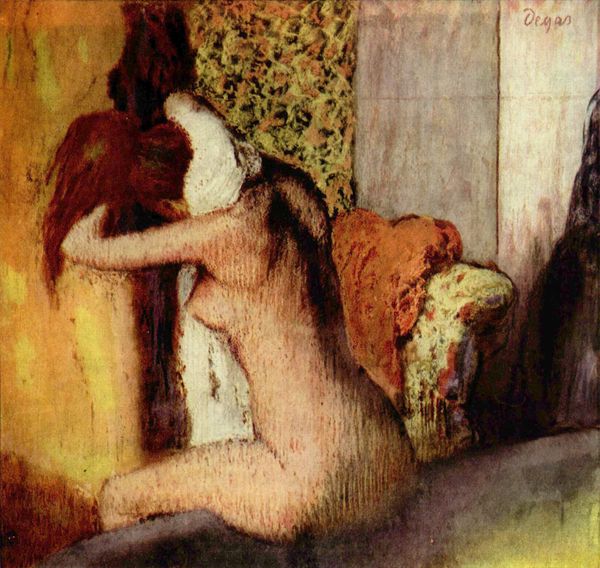
Dimensions: 38 x 27.8 cm
Copyright: Public domain
Curator: What strikes me first about this work, Degas’s "Nude from the Rear, Reading" of 1885, rendered in pastel, is its incredibly private atmosphere. Editor: Absolutely. It feels intimate and somewhat melancholic. The hunched posture, the obscured face... it evokes a sense of isolation, or perhaps just deep concentration. And that soft, earthy palette lends itself to quiet contemplation. Curator: Yes, and Degas situates the nude not in the traditional heroic or idealized setting, but within the domestic sphere, seemingly absorbed in a book. There’s an erasure of the male gaze here. He decenters traditional power dynamics in the genre of the nude. It’s about a woman occupying space on her own terms. Editor: Precisely. And while she’s presented nude, there’s a notable absence of the overt sensuality we might expect. Instead, her bare back almost conveys a sense of vulnerability, making the act of reading seem like an act of self-possession, maybe even defiance. Look at the contrast between the cool blue-gray tones in the cushion at the base of the drawing and the warmer tones that render her body—it subtly underlines this tension between exposure and concealment. Curator: Degas often explored the lives of women in private moments. But what are the politics of depicting female vulnerability? This work demands a closer inspection of the complex relationship between representation and lived experience. What does it mean to witness someone lost in thought like this, when traditionally they are merely an object to be gazed upon? Editor: And think of the book as a symbol itself. In a patriarchal society, the knowledge held within those pages could be viewed as subversive. By depicting the woman engaging with text, Degas might be suggesting an engagement with power. Is she forming an alternative worldview by steeping herself in books, shutting out the conventional roles to which she is confined? Curator: Those questions certainly enrich our understanding of the artwork within the socio-historical landscape of its time. It shows the act of reading as an inner refuge, as something deeply personal, especially at a time when women's education was heavily contested. Editor: Exactly. It makes me consider the evolving symbolism associated with female literacy, how reading went from being a skill often discouraged for women, to becoming a silent symbol of their burgeoning empowerment and freedom. Curator: Degas invites us to see beyond the surface. Editor: And, to find powerful resonances in those private, solitary moments.
Comments
No comments
Be the first to comment and join the conversation on the ultimate creative platform.
